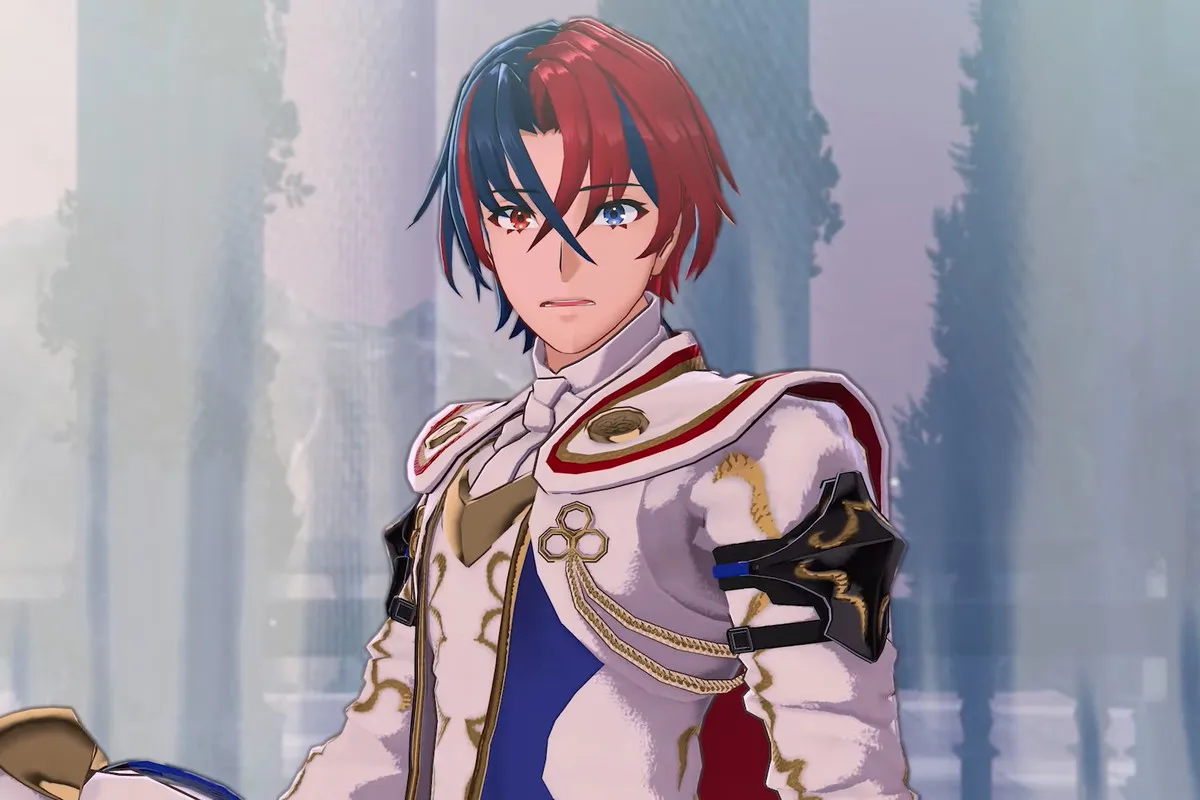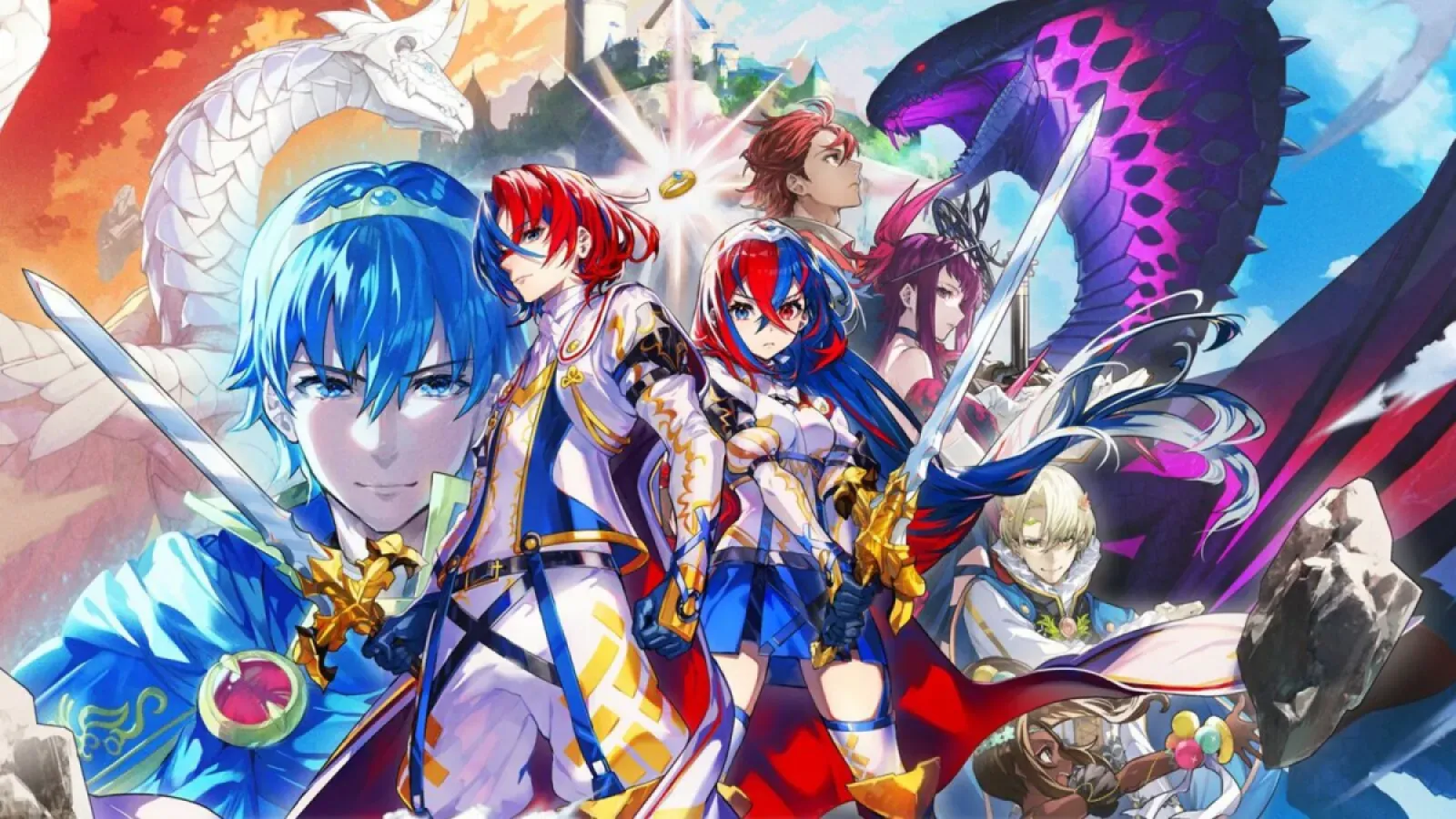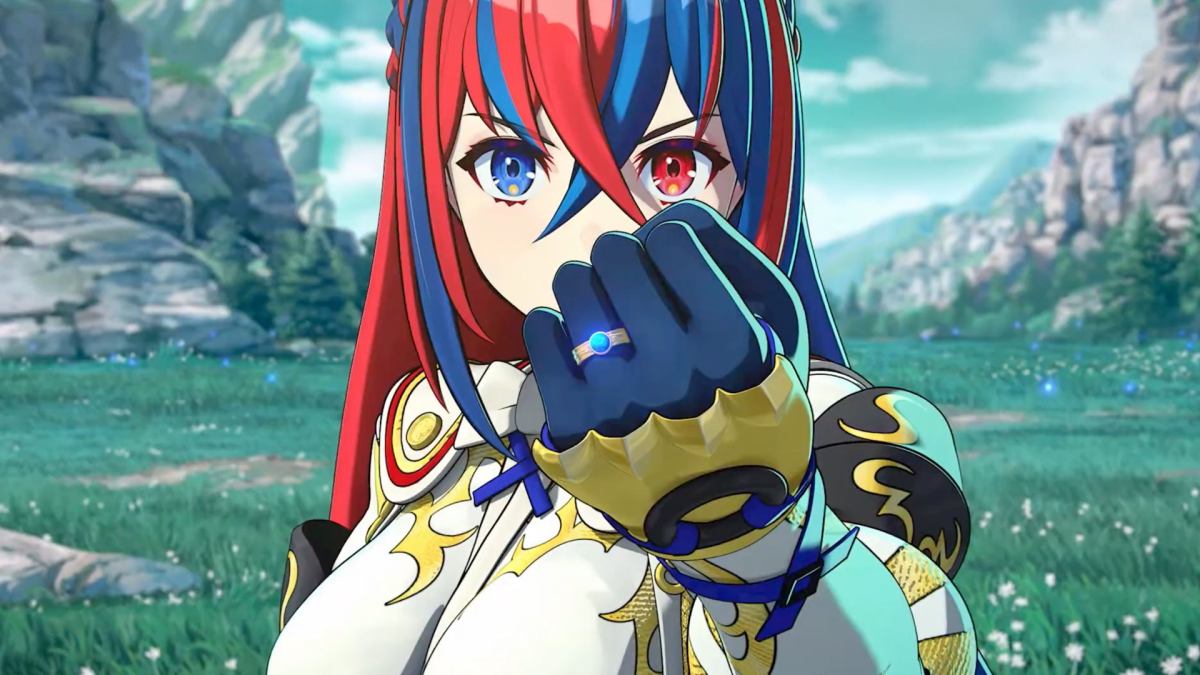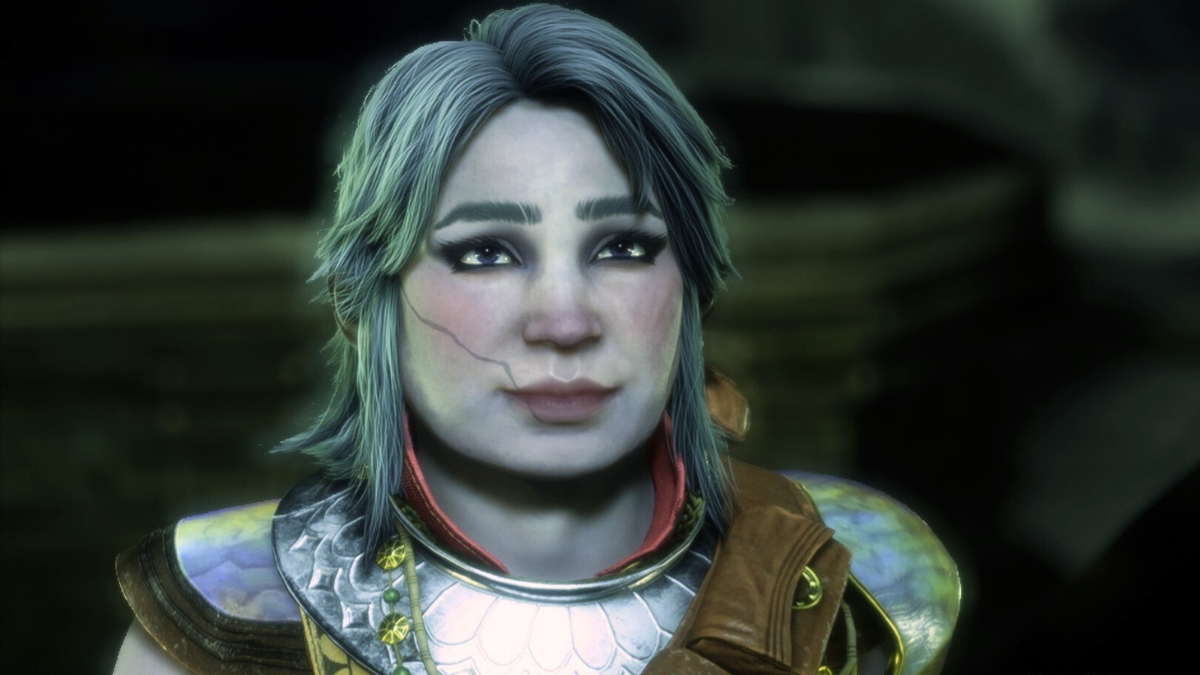The Fire Emblem franchise gets a lot of flack, for a lot of different reasons. Some people don’t know why there have to be so many FE characters in Super Smash Bros. Others find the “anime-ness” of the series to be tired and uninteresting. And when we got our first looks at the newest title, Fire Emblem Engage, many fans of the franchise feared it would only continue to fuel the flames of mockery with its garish art style and goofy attitude.
However, after giving a substantial amount of time to the game following its release, I’ve come away from it with a great deal of fondness. It’s not the deepest game out there, even by Fire Emblem standards, and for fans of the previous mainline title, Three Houses, it might feel like a massive step back. But in my opinion, as someone who’s not necessarily a series “veteran” but has a fair grasp on what the franchise as a whole can offer players, I think it’s a delightful return to basics that has far and away exceeded my expectations. Which is good, considering I spent nearly $100 on the base game and DLC pass. (Because I’m silly <3)
Simple, yet effective

The plot of Engage is nothing to write home about, but it works all the same, and it has some fairly compelling moments. It’s a standard JRPG fantasy story about a hero’s journey, starring Alear, the Divine Dragon, who serves as a sort of living deity who watches over the continent of Elyos. Elyos itself is interesting, as it’s built off of (and around) past Fire Emblem stories. So it’s almost like a meta setting, wherein prior entries serve as folklore for the continent, and the heroes of these entries are guardian spirits of sorts.
These heroes are called “Emblems,” and they rest in Emblem Rings which can only be awakened by Alear. I think the writers gave up trying to make the Emblems any deeper than they are, because they’ll make vague allusions to the worlds they come from, but it’s never really established whether or not they’re the literal spirits of these historical/folkloric characters, or if they’re just conceptual fragments. I just decided, as a headcanon, that they’re like spirits in Shaman King, wherein they’re smaller portions of a larger ghost.
What’s otherwise great about the story is it never gets overly convoluted. Unlike Three Houses, which set up a lot of great potential and exposition that never got fully realized, Engage knew it was going to be a basic bitch and stuck to it. And that’s something I can respect! It felt a lot like Awakening in that it wasn’t necessarily a groundbreaking narrative, yet it felt comfortably familiar, which has its own merits and then some.
Fire Emblem: Engage Gameplay: Pros and Cons

Like other Fire Emblem titles I’ve played, Engage has its strengths and drawbacks, and it mixes some old with some new. The Emblem system is pretty fun to screw around with, as you match various Emblems with characters they may or may not benefit from. Some players are savvier than me and pair based off of stat match-ups. I generally pair based off of character similarities, and weapon cohesion. So, for instance, I paired Chloé, a pegasus knight who loves fairy tales, with Tiki, a baby dragon (AKA Manakete). And their combination happened to work so thematically and strategically well (in my game, Chloé is practically a war hero with how hard she’s carried my team), I’ve never ended up changing their pairing, and I don’t really intend to.
Conversely, some characters need a little mix and matching before you find the “right” fit. And even then, they may never have a “right” fit—which is why it’s cool that you can level up their bonds with various Emblems, with the intention of only inheriting certain skills. As your pairings increase their bonds, you’ll be able to inherit certain skills permanently, and these skills can vary from stat buffs to weapon proficiencies. For instance, I found myself lacking in good axe units, so I let Yunaka tool around with Edelgard until she could become an axe-wielding Wolf Knight. Now she’s even more of a beast than before.
Where the gameplay does grate on me is how useless it makes early-game units. There are so many characters in this game, it’s impossible to train all of them equally, and you have nearly zero incentive to do so. In Awakening, there was at least some incentive because you could potentially create some powerful future units down the line. But in Engage, you’ll get blasted with like seven new units per country, only to end up using one or two. It feels like such a waste! You’ll just start to grow fond of a certain character, only to end up ditching them for an objectively better character one chapter later.
I suppose you could grind away to keep your army at the same level unilaterally, but there’s not really any incentive for that aside from a potential personal desire to do so. There aren’t many resources to do so either: making money is weirdly difficult in this game, and buying a bunch of master seals and good gear is ultimately wasted on units that have such a difficult time keeping up.
As far as the “life sim” elements of gameplay go, it certainly isn’t Three Houses, but depending on your gameplay style, that’s not necessarily a bad thing. A lot of these elements are optional, which I personally appreciated since it made the gameplay feel less sluggish in between chapters. You can have a nice meal, you can go on wyvern rides, and you can pet the weird little Puppycat creature who doesn’t pay any rent, but you’re never forced to. It’s not like the Officer’s Academy, where you kinda had to teach those grubby little prep school kids in order to progress the plot.
Speaking of, now seems like a good time to talk about the characters themselves.
A clownish cast (for better and for worse)

Every Fire Emblem game operates a triangle of priorities: good character design, good plot, and good gameplay. Engage is somewhere in the middle, I would say. The characters range from being largely average to quite delightful. Still, unlike Three Houses, where I was pretty fond of most of the cast, I only found myself really caring about a handful of characters in Engage.
But those few characters helped make my gameplay experience all the more memorable. For instance, Alcryst—second heir to Brodia—was a character I really grew to enjoy, because you see him try so hard to come out of his self-loathing shell, and he’s such an interestingly feminine character when compared to his strapping hulk of an older brother, Diamant. And Diamant brought the whole atmosphere of the party way down to earth, which I appreciated. Then there’s Pandreo, a man of the cloth who just cannot stop talking about his love for partying. He’s like a priest of Dionysus, the way he operates, and I honestly couldn’t get enough of him. I also really enjoyed Merrin and Yunaka’s petty friendship, which had some delightfully sapphic undertones, might I add.
And some of the tertiary characters in my playthrough weren’t even that bad, they just ended up going underutilized due to the aforementioned recruitment system. A lot of the cast’s depth is hidden in supports you’ll likely never see just because of how hard it is to get everyone together. But then, there are characters that are just baffling to behold.
Most prominently, these characters are the literal child soldiers. Yes, a good portion of the cast is in their teens, which is already sketchy enough. But then you’ve got Anna and Jean, who are about 11 and 10, respectively. Like what the actual hell?? I hate that they’re recruitable! I felt so weird deploying a little boy on the battlefield just because he happened to be my best healer at the time. It surely isn’t that hard to write people your own age, why go the extra mile to put BABIES on the front lines???
Then there are the characters who aren’t babies, but they still feel like black holes in an otherwise perfectly pleasant cast. For starters, Amber—we GET IT, you like alpacas, but my god you need to shut up about it! Being quirky and obsessing over funky animals was a 2010 thing, get your annoying ass out of here. And then there’s Hortensia. I don’t even want to get into Hortensia. The game tried so hard to make me care about her—and it got close before completely dropping the ball with her writing and making her some candy-cane gremlin I couldn’t bench hard enough.
Finally, we have the protagonist, Alear. Unlike Byleth, the protagonist of Three Houses, Alear is fully voiced and demonstrates a conspicuous personality. Both voice actors do a phenomenal job, and ultimately, I enjoyed playing as Alear. I just wish their design wasn’t so atrocious. I mean, hair aside, there’s just a million things going on with their outfits, and only one or two of those things work. Thankfully, their personality is compelling and developed enough to make you put their appearance aside … for the most part.
Is Fire Emblem: Engage worth playing?
Unlike some other games I’ve reviewed, I don’t know if I could recommend Engage to a widespread audience. It’s got a lot going for it that works really well, but only if you’re into what it’s providing. I enjoyed the simple hero’s story, and I like games where you raise characters and eventually see your efforts paying off. Plus, it’s just good, old-fashioned Fire Emblem fun.
Also, as someone who really doesn’t like anime and anime-ish tropes, I felt that the game wasn’t as tonally off-putting as it could have been. I actively avoided the stuff I wouldn’t like (such as having to suffer Amber’s stupid ass going on about alpacas in every situation) and was therefore able to enjoy the game for what it was.
Ultimately, I like Engage a lot! I see myself replaying it once my initial playthrough finishes up. And I could see it being a good starting point for newcomers, as it has more in common with past entries than Three Houses did. But it’s a far cry from Three Houses in most ways, and that could be a turn-off for many players. I suggest watching the first few minutes of gameplay, and if you have a 3DS, download the Awakening demo and see if you like that.
(Featured Image: Nintendo)










Published: Jan 28, 2023 11:40 am